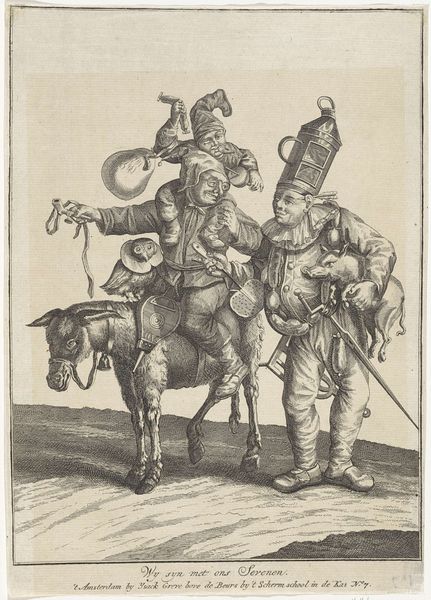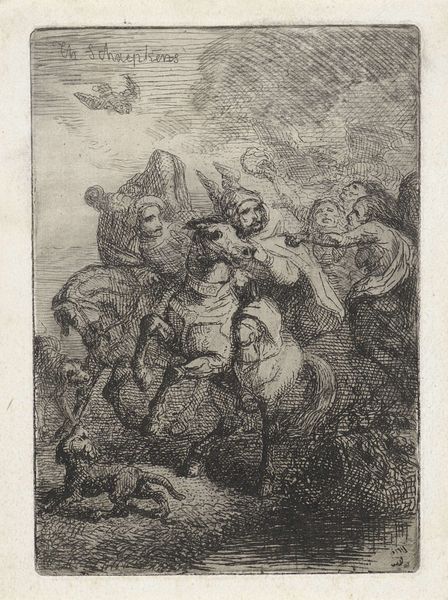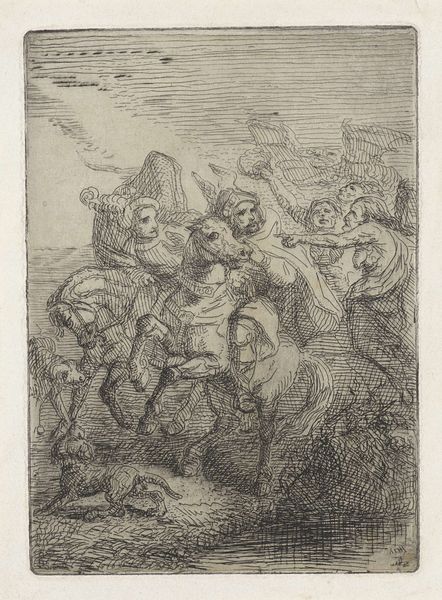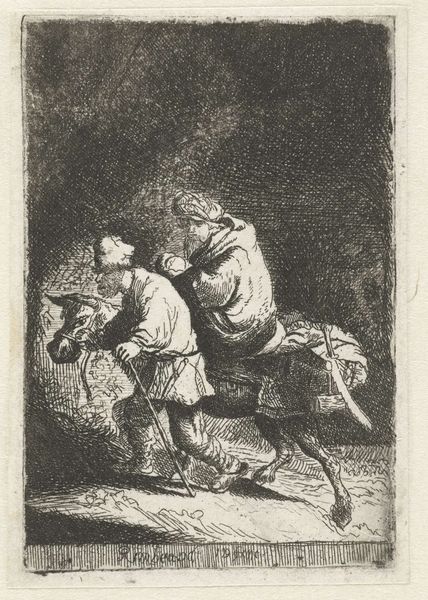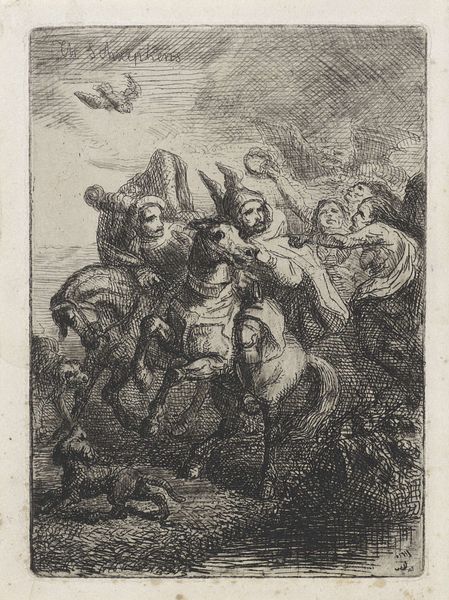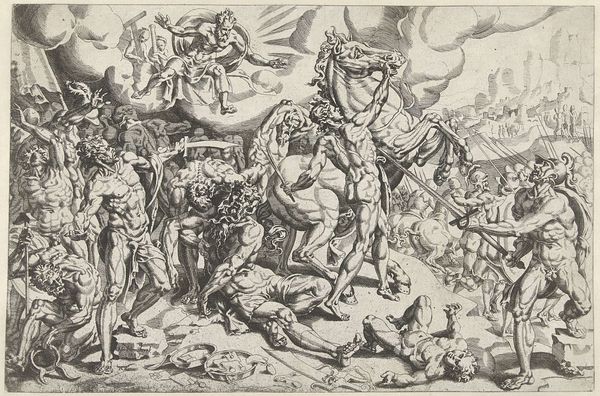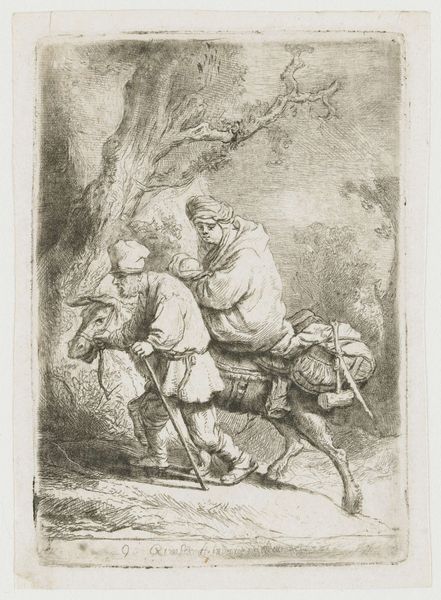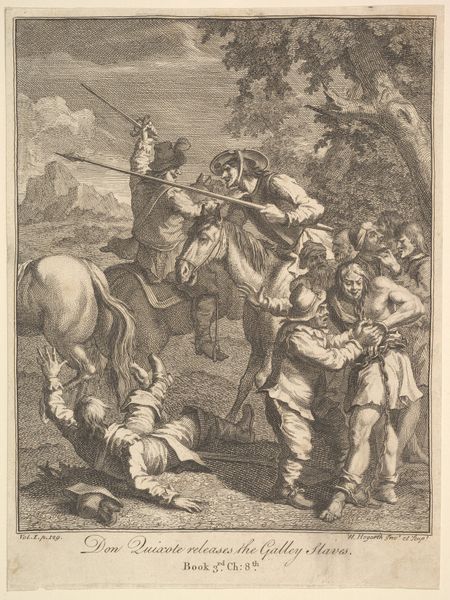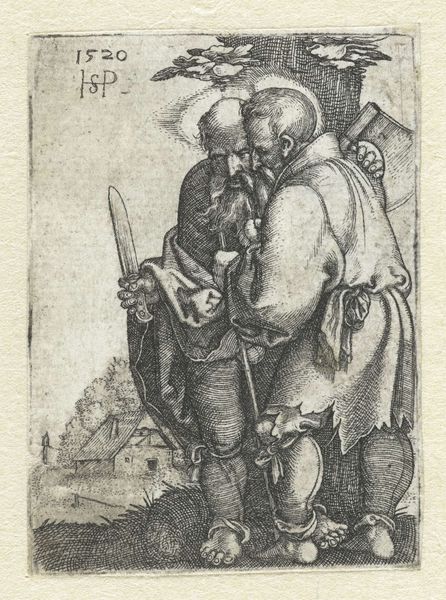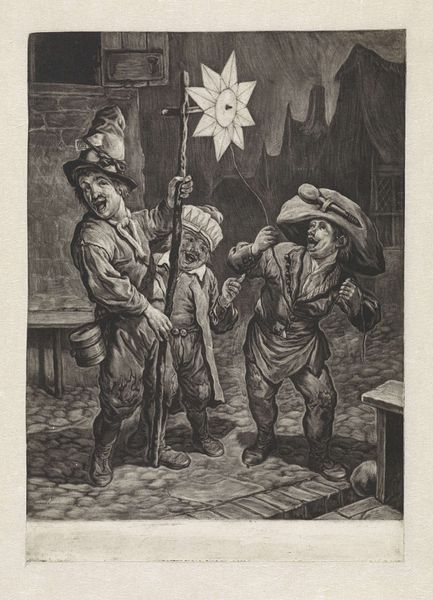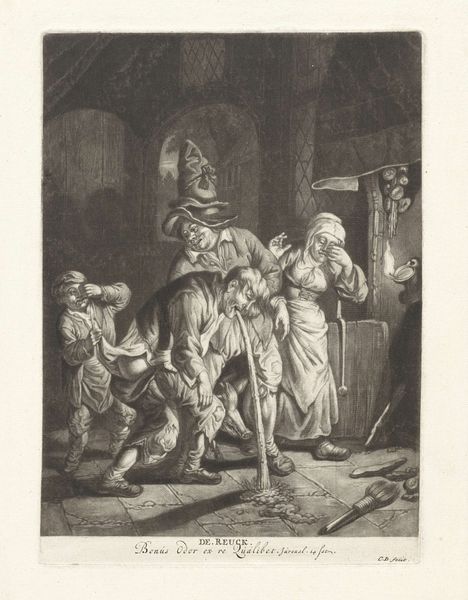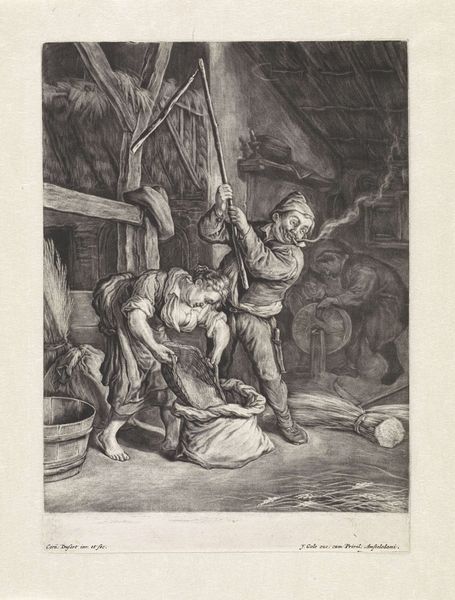
engraving
#
narrative-art
#
dutch-golden-age
#
old engraving style
#
figuration
#
genre-painting
#
engraving
Dimensions: height 252 mm, width 175 mm
Copyright: Rijks Museum: Open Domain
Curator: This engraving before us, titled "We are Seven" or "Wij zijn zeven" as it reads in the original Dutch, was completed around 1695 by Cornelis Dusart, and it’s a piece brimming with enigmatic characters. Editor: My initial reaction is one of delightful absurdity. The density of the lines and the tonal contrast create a dreamlike, almost nightmarish scene. The composition teeters between a processional march and a chaotic jumble of figures. Curator: That’s a fair assessment. The "seven" are less literal beings and more archetypes representing folly, excess, and perhaps even societal anxieties of the time. Each character, with their distinctive accoutrements, speaks to specific vices or character flaws. Look, for instance, at the figure riding the donkey—a creature traditionally associated with foolishness—who also bears an owl, often a symbol of wisdom or learning, a rather curious juxtaposition. Editor: Indeed! The layering of these visual elements adds to the piece’s ambiguity. The central figure, the rider, dominates the scene with his exaggerated features and posture. He's carrying objects—a pipe, a bladder—that seem almost props in a morality play, placed within very purposeful juxtapositions that invite active deconstruction. Curator: Precisely! The lantern hanging from the hat of another character further adds to this complexity, representing a warped sense of illumination or distorted understanding. Even the child perched atop the rider plays his part; the innocence lost under the heavy burden of worldly vice. Dusart uses satire and allegorical symbols, reflecting the moralising tone of Dutch Golden Age art. Editor: I can almost hear the rasping sounds from that little drum being played. The entire composition pushes towards disorder. Although confined to the etching process of fine lines, a powerful feeling of disruption bleeds out of this image, due to a multitude of symbols and caricatures, that allude to society’s weaknesses. Curator: I find myself thinking that by imbuing seemingly common people and objects with so much cultural resonance, Dusart invites us to see beyond the surface, question societal structures, and face the contradictions within human nature itself. Editor: Yes, what I first interpreted as absurd on closer inspection becomes a quite sobering investigation into humanity’s folly. A fine example of late-period Dutch satire.
Comments
No comments
Be the first to comment and join the conversation on the ultimate creative platform.
